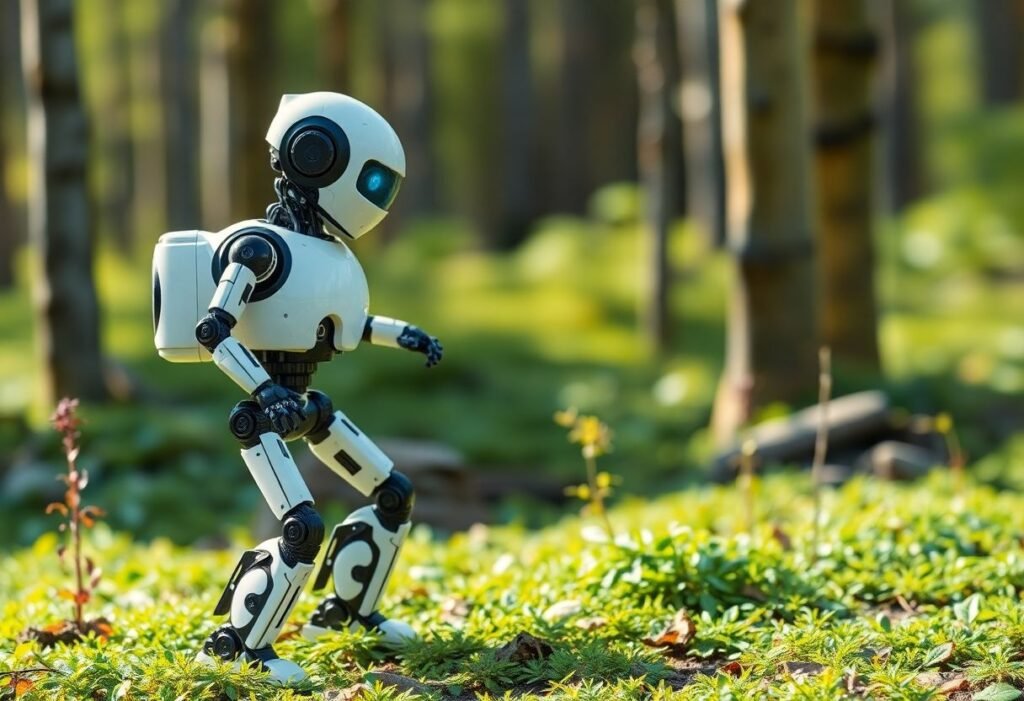The integration of robotics in environmental conservation has become a focal point of innovation, offering advanced solutions for our planet’s pressing issues. As the world faces serious environmental challenges, robotics provides a way to take proactive measures that protect ecosystems and promote sustainability.
Innovative Robotics Solutions for Wildlife Conservation
Robotics has emerged as a crucial technology in wildlife conservation. Innovative robots equipped with sensors and AI capabilities allow for real-time monitoring of endangered species. These robotic systems track animal movements and behavior without the disturbance of traditional human intervention. Drones, for instance, are already being used in various national parks to patrol vast territories, gather data on wildlife populations, and even assist in anti-poaching efforts. By harnessing these advanced technologies, conservationists can develop more effective strategies to protect threatened species and preserve biodiversity.
Robotics and Marine Ecosystems Protection
The oceans are facing unprecedented threats from pollution and overfishing, making robotics an essential tool for marine conservation. Autonomous underwater vehicles (AUVs) are being deployed to monitor coral reefs, study marine life, and collect data on water quality. These innovative robotics leverage advanced imaging technologies to provide critical insights into the health of underwater ecosystems. Additionally, robotic systems can assist in cleaning up ocean debris, protecting marine habitats, and ensuring sustainable fishing practices. By utilizing these cutting-edge technologies, we can make significant strides in preserving our marine environments.
Land Restoration through Robotic Technology
Restoring degraded landscapes is critical for environmental sustainability, and robots are playing an increasingly important role in this process. Robotic seeders are capable of planting thousands of seeds at a much faster rate than manual planting. These machines can traverse rugged terrains, ensuring reforestation efforts reach areas that are otherwise inaccessible. Moreover, using robotics in land restoration minimizes the need for human labor, allowing conservationists to focus on larger strategies. By effectively integrating robotics into reforestation projects, we can restore ecosystems more efficiently and combat climate change.
The Role of Robotics in Climate Monitoring
Climate change poses a substantial threat to global ecosystems, and robotics offers innovative solutions for climate monitoring and research. Robots equipped with advanced sensors are now able to gather critical data on atmospheric conditions and environmental changes. This enables scientists to track climate patterns accurately and develop precise models for forecasting. Robotic technology assists in studying glacial melts, rising sea levels, and changes in biodiversity, providing insights necessary for informed decision-making in environmental policies. The adoption of these innovative monitoring techniques is essential for effective climate action.
Smart Robotics in Sustainable Agriculture
Integrating robotics into agriculture provides significant benefits for environmental conservation. Robots designed for precision farming optimize resource use by applying water, nutrients, and pesticides more efficiently. This reduces waste and minimizes the environmental impact of farming. Smart robotics, such as automated tractors and drones, enable real-time monitoring of crop health, allowing farmers to make data-driven decisions. By leveraging robotics in agriculture, we can promote sustainable practices, protect land resources, and enhance food security.
Challenges and Future Directions of Robotics in Conservation
Despite the promising developments in robotics for environmental conservation, challenges remain. Issues such as high costs, technological limitations, and regulatory hurdles can impede widespread adoption. The future of robotics in conservation will rely on collaborative efforts between technologists, environmentalists, and policymakers to overcome these barriers. As we continue to innovate and develop robotics for environmental solutions, the potential to address ecological challenges will grow exponentially. By embracing cutting-edge technologies, we can pave the way for a more sustainable future.
Disclaimer: This article is for informational purposes only and does not constitute professional environmental advice. Please consult with a qualified professional for specific guidance.





















